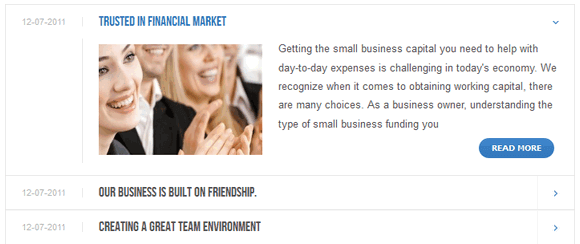For several years, building websites I meet with a phenomenon that invariably makes me laugh, but also sometimes irritates. It’s about fear of some customers from empty space on the website.
Some people think that every free, empty space on the page is a disadvantage of the project and try to fill every available space, in general modules (ads, animations, links, or whatever). Any empty space treat as an enemy, as if any “unused” space decreased return on investment. It’s kind of like situations in a restaurant where the dish (soup) must be filled to the brim.
This leads to comments such as:
- “The page must be closing” – it is unacceptable to the existence of empty columns such as the side of the article. You must patch of emptiness and inequality that all columns are of equal length, resulting in the formation of “junk columns” filled with just anything, that only agreed as to the pixel.
- “We can not have holes” – which means that the existence of any large gaps between the boxes and the content is bad.
- And the worst: “How much we have to fit on the first screen above the lower edge of the screen” – resulting in an impractical compress of content (such as images, too small fonts).
Fear of a blank space on the page connected to the lack of hierarchy of elements and thinking a list of features and effects (the more the better) and not the needs of users. In general, this is the most common cause to create usable interfaces.
Unfortunately, still dominated by the assumption that almost 100 percent area of the website should be filled with information. But it is a misconception, because the more information, the smaller the transmission power of each individual component. Consequently, it is harder for users to find key information and find out the contents of the site.
White space (although it need not be white), also sometimes called negative space, is an important element of building layout. Gestalt psychology teaches us that our brains perceive the space as part of the background equivalent to the content. This balance between the space filled with content, and the empty space creates a negative composition. No white space causes clutter, lack of dynamism, is difficult to read texts, searching for information. The larger blocks of content, the more negative space is needed to maintain balance and show the structure of information.
Large pictures and big titles are surrounded by empty space more attractive and attract attention. Better to look and on the big screen and small screen on the tablet. Suitable large text size and line spacing, margins make clear that the text reads better. There is no reason to paging longer articles. According to research, among others conducted by Google users prefer to view on one screen long, non-pageable (if the page does not load very slowly).


In the DTP work we have a closed composition, knowing all the content. In digital media, we have fixed templates, that display dynamically changing data, which can more or less, the text can be longer or shorter. We almost never absolutely certain what the user will see.